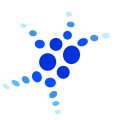
WS 2024/2025
Computational Neuroscience:
Models of Neural Systems
Richard Kempter and Benjamin Lindner


|
WS 2024/2025Computational Neuroscience:
|

|
Dates: Weekly, from 21-October-2024 to 14-February-2025.
Location: Bernstein Center for Computational Neurosciences Berlin, Haus 6, Philippstr. 13.
Times:
Target Group: Students of Computational Neuroscience, Medical Neuroscience, Biology, Biophysics, Physics, Mathematics, Computer Science, and Psycholgy.
Here is the full description of the master modules Models of Neural Systems (Master CNS, TU) and P24.3.e (Master Physics, HU).
Requirements: Basic knowledge in Mathematics (e.g. calculus, differential equations, algebra) and a higher programming language (e.g. C, C++, Python, MatLab).
Aims and Topics: Participants should learn basic concepts, their theoretical foundation, and the common models used in Computational Neuroscience. The Module ''Models of Neural Systems'' also provides some neurobiological knowledge and explains the relevant theoretical approaches as well as the findings resulting form these approaches so far. After completing the Module, participants should understand strengths and limitations of the different models. Participating students will learn to appropriately choose the theoretical methods for modeling cellular neural systems. They will learn how to apply these methods while taking into account the neurobiological findings, and they should be able to critically evaluate results obtained. Participants should also be able to adapt models to new problems as well as to develop new models of neural systems.
Moodle Pages and People:
by
Richard Kempter
and
Benjamin Lindner
Overview about the contents of the module:
Further details are available at this page.
Analytic Tutorials: To obtain a course certificate ("Schein") that certificates a successful participation, solutions to the weekly problem sets must be turned in electronically, and on average at least 60% of the points must be obtained. Students must work in groups of ideally 2 (maximum 3). Everybody must submit a copy of the joint solution (indicating all group members). Group compositions changes two times during the semester (groups of size 3 do not keep subgroups of 2 students). Groups change inbetween the three blocks of problem sets 1-4, 5-9, and 10-13. The 60% threshold applies to each of the 3 blocks of problem sets. Furthermore, a successful participation requires that two (out of three) very short written assessments (typically et the end of the blocks) are passed. Finally, an active participation in the tutorials is strongly encouraged. The successful presentation of a problem will be rewarded by bonus points (10%) for the presenting student.
Computer Practicals: To obtain a course certificate ("Schein") that certifies a successful participation, solutions to the weekly problem sets must be turned in electronically, and on average at least 60% of the points must be obtained. Students must work in groups of ideally 2 (maximum 3) . Group compositions must change at least 2 times per semester, and groups must not work in the same constellation for more than 3 problem sets (groups of size 3 must not keep subgroups of 2 students). Furthermore, a successful participation requires that one (out of two) very short written assessments are passed. In a final project phase, students replicate parts of recent scientific papers and summarize their results in a short report and an oral talk.
Module Examinations: Oral exam (graded); certificates of successful participation in the tutorials and/or practicals is a prerequisite for the oral exam. The exam days are 18-19 March-2025. To prepare for the exams, there will a special meeting of students and examiners on Monday, Feb-10-2025 at 11:45h.
Recommended reading:
P. Dayan and L.F. Abbott (2001) Theoretical Neuroscience. MIT Press, Cambridge, Massachusetts.
E. M. Izhikevich (2007) Dynamical Systems in Neuroscience: The Geometry of Excitability and Bursting. MIT Press, Cambridge, Massachusetts.
Johnston, Wu (1995) Foundations in Cellular Neurophysiology, MIT Press, Cambrigdge, Massachusetts.
Advanced/additional reading:
M. F. Bear, B. W. Connors, M. A. Paradiso (2007) Neuroscience: Exploring the Brain, Lippincott Williams & Wilkins, Baltimore, Maryland.
Thomas P. Trappenberg (2002) Fundamentals of Computational Neuroscience. Oxford University Press, Oxford, UK.
P. Churchland and T. Sejnowski (1994). The Computational Brain. MIT Press, Cambridge, MA.